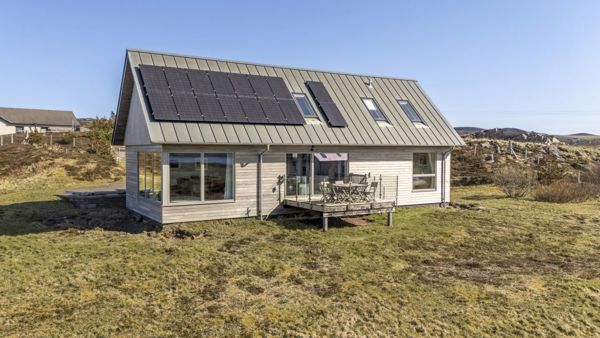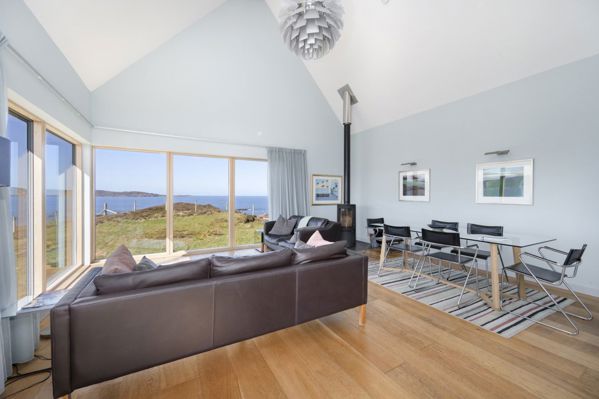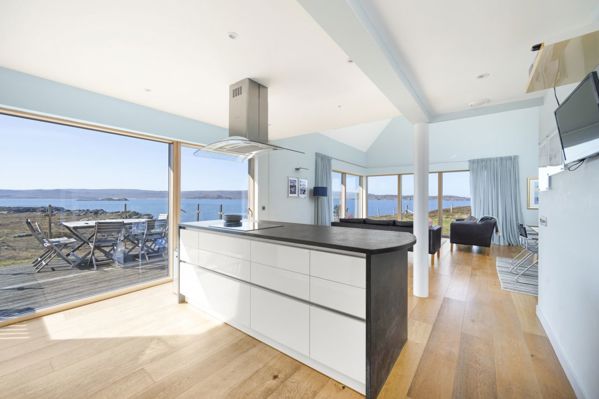Designed by architect Robin Haddow and completed in 2013, this striking three bedroom home combines modern design with outstanding energy efficiency, set in one of the Scottish Highlands’ most dramatic coastal backdrops.
Thomas Jones, handling the sale on behalf of Galbraith, said: “Named in reference to the WWII boom net that once protected Loch Ewe, Boom House offers a rare opportunity to purchase a modern, energy conscious home in a remarkable Highland landscape.

“The property will appeal to a range of buyers who are looking for the chance to enjoy contemporary and sustainable living in a stunning coastal setting.”
Positioned within easily maintained grounds in the crofting village of Mellon Charles, Boom House offers uninterrupted views over Loch Ewe to the surrounding mountains.
The property has clean architectural lines, larch cladding, steel roofing and expansive glazing that fills the open plan interior with natural light, while framing far reaching views.
At the heart of the house is the open plan kitchen, dining and living area, featuring a vaulted ceiling, corner window, wood burning stove and sliding doors to a raised timber deck with glass balustrade. A mezzanine sitting room overlooks the main living space, enhancing the home’s sense of light and openness.

Boom House is highly energy efficient, incorporating an air source heat pump, mechanical ventilation with heat recovery system, solar panels with feed in tariff and excellent insulation. These features deliver a comfortable and economical home throughout the year.
In nearby Aultbea, there are local amenities available whilst further facilities can be found in Poolewe, Gairloch, Ullapool and Dingwall. Inverness is about 78 miles away and provides all the services of a major city including an airport with regular UK and European flights.
The name of the property is a reference to the Boom net which was run across the entrance to Loch Ewe during the Second World War. In September 1939, there were concerns about the security of the fleet based at Scapa Flow. A number of vessels were moved to Loch Ewe, and between 1941 and 1945, Loch Ewe was the main strategic military base for arctic convoys with up to 95 Merchant Navy and Royal Navy ships often anchored. A boom defence was set up at the entrance to Loch Ewe and anti-submarine nets guarded against submarine attack.


